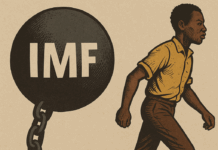As Kenyans marked the 62nd anniversary of the execution of liberation hero Dedan Kimathi Monday, fresh information has emerged about the push and pull on how to kill him after a colonial court had sentenced him to hang.

The information is contained in the papers of the colonial Nyeri district information officer Alistair Matheson who died in September 2002.
He is buried at the family home in Nairobi just past Karen shopping centre.
An extract from Matheson’s rich collection indicates that as soon as the verdict to die was pronounced, jubilant white settlers poured into the streets demanding that Kimathi be hanged in public, “as lesson and deterrent to the rest of the natives who’d wish to challenge the empire.”
In the mind of the settler, public execution would also be proof — and humiliation — to the Mau Mau that their leader had indeed been captured and “hanged by the rope until he died.”
However, the colonial office in London highly objected to public hanging which was considered an “affront to British sensibilities”.
In particular, the British government was concerned that a public hanging would cause uproar in the British parliament where already there was much criticism and demand for a stop to brutal suppression of the liberation movement in Kenya.
Besides, the colonial government feared public execution would have the backlash not only of giving the Kikuyu one more reason to escalate the struggle, but also elicit sympathy from other Kenyan communities.
Fearing authorities in Nairobi would be arm-twisted by the settler community to do something “as silly as open execution of Kimathi”, writes Matheson, the colonial office in London gave an explicit directive that Kimathi hanging and disposal of the body be done secretly.
This is how it happened, according to Matheson. A temporary wooden tower was erected next to the Nyeri court building where Kimathi was tried, and covered with a large canvas.
At dawn, the freedom fighter was escorted in, hurriedly executed, and his body transported to Nairobi for secret disposal at the Kamiti Prison. To date, no one can exactly point where Kimathi remains are at Kamiti.
The colonial information officer also records how the craze to kill by the whites was so contagious as to catch up with colleagues in his department.
He writes of a day when on a visit to Embu, a colleague journalist knocked at his door one early morning. “Come and see what I was up to last night”, he blurted out pointing at two dishevelled corpses face lying downwards.
“I saw the two niggers from my window and thought I should rehearse on my shooting lessons. And bang, I got each of them with the first shot,” said the elated colleague. It was like he’d just shot at stray dogs and had no compunctions at all,” Matheson says.
Kindly follow us on twitter:@AfricanVoice2









